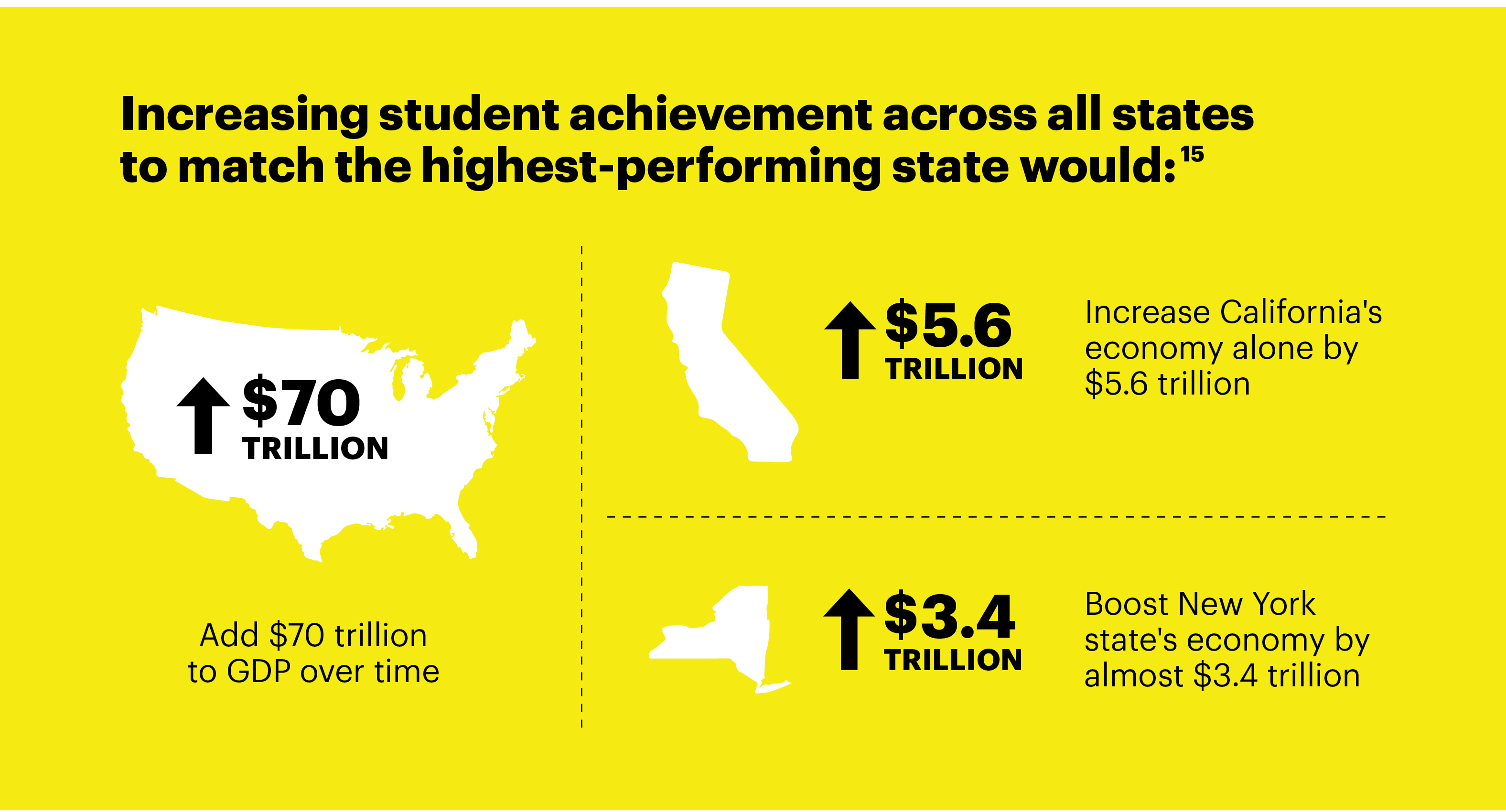Build Momentum
For High School Transformation
The adoption of CBE across American education would be challenging and expensive. What’s the evidence for making the transition, and what benefits can we expect?
- Communicate the Urgency
- Inspire with Powerful Examples
Governors and other state leaders are uniquely positioned to drive attention, generate excitement, inspire action, harness expertise, and accelerate innovation. State policies can make a big difference and deliver real results for high school students. But meeting this challenge isn’t merely about passing laws or launching new initiatives.
It’s also about galvanizing a statewide movement to transform high schools. Only bold leadership—your leadership—can communicate a vision, inspire action, and bring together top talent from across the state to demolish barriers and create breakthrough solutions. The first critical step? Mobilize the movement.


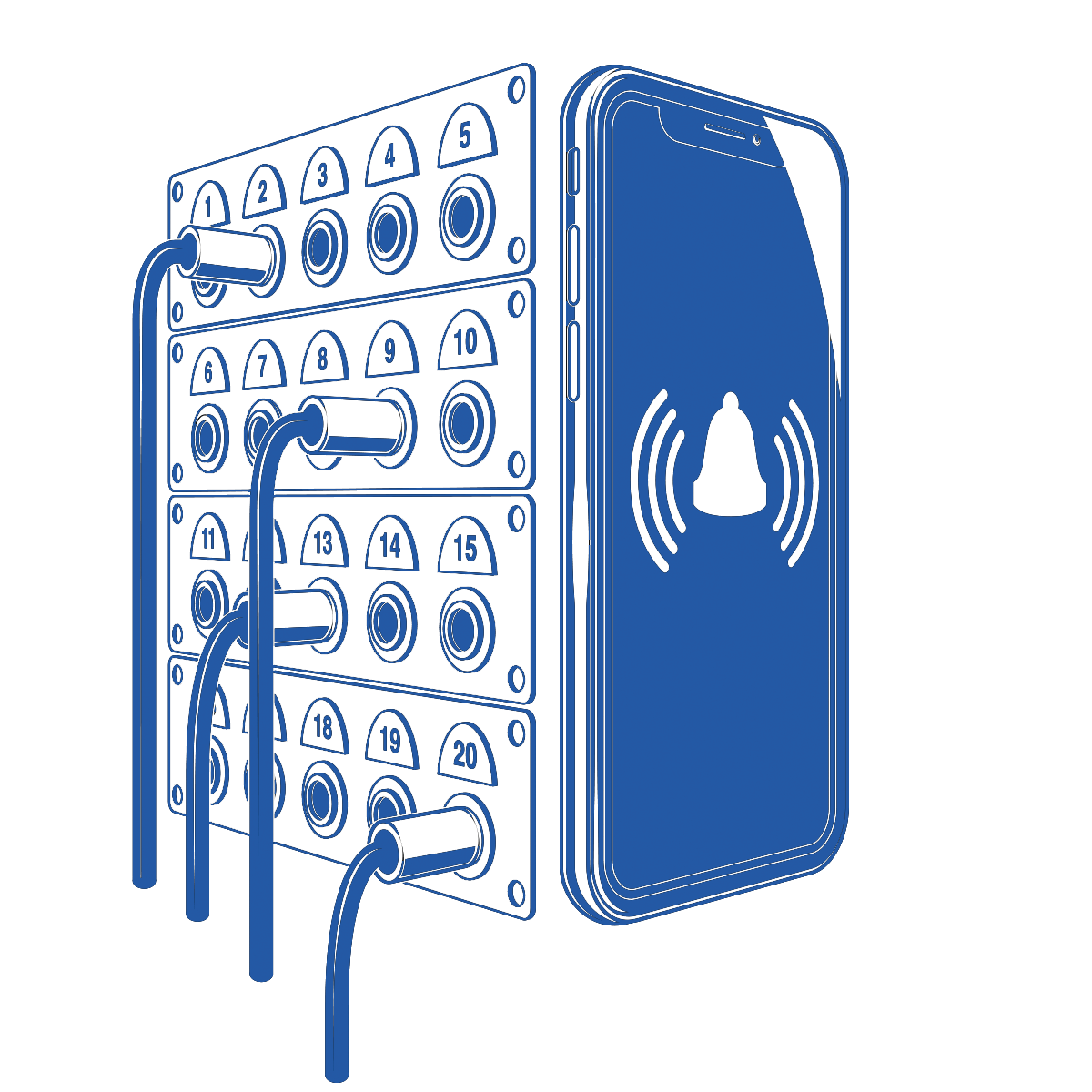
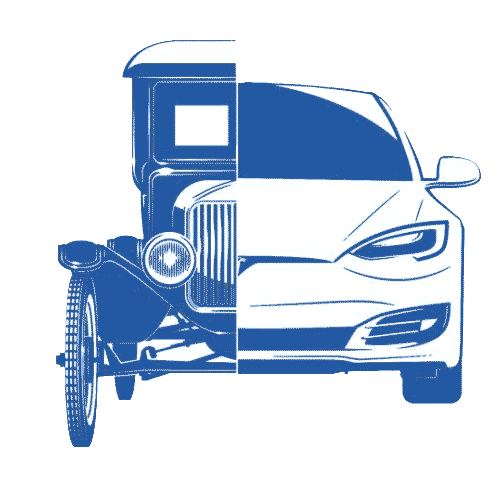
- Communicate the Urgency
To help the people of your state understand the need for high school transformation, you’ll want to draw on in-state data on workforce needs and high school outcomes. We’ve collected and organized some of those data for you and included them as a pocket-sized attachment to this guide. But, as you know only too well, you’ll want to weave those data into a compelling story.
Below you’ll find some of the talking points that we use. Feel free to use any that fit your context, substituting in your own state’s data where desirable.
In those hallways and classrooms, very little has changed.
Most American high schools rely on an educational model created a century ago. Students experience a static curriculum taught at a standardized pace by one teacher teaching one subject at a time. That worked well for many decades, preparing generations of young Americans for productive citizenship in an industrializing society. But the world has moved on, with massive implications for the future of work.
Innovation, customization, globalization, and automation are reshaping the American workplace.
Nearly half of Americans have jobs where at least some tasks can be automated.1 We can’t afford to prepare students for jobs that artificial intelligence (“AI”) and robots can perform just as well, and at a lower cost. In the future, well-paying work will demand the irreplaceable qualities and skills at which humans are still best: the ability to solve unfamiliar problems, create, innovate, connect, empathize, synthesize, and strategize. That’s true even for blue-collar jobs. Over half of American manufacturing firms say that advanced reading skills are needed for core production jobs. Even more, say that the ability to collaborate and work in teams is “very important.”2
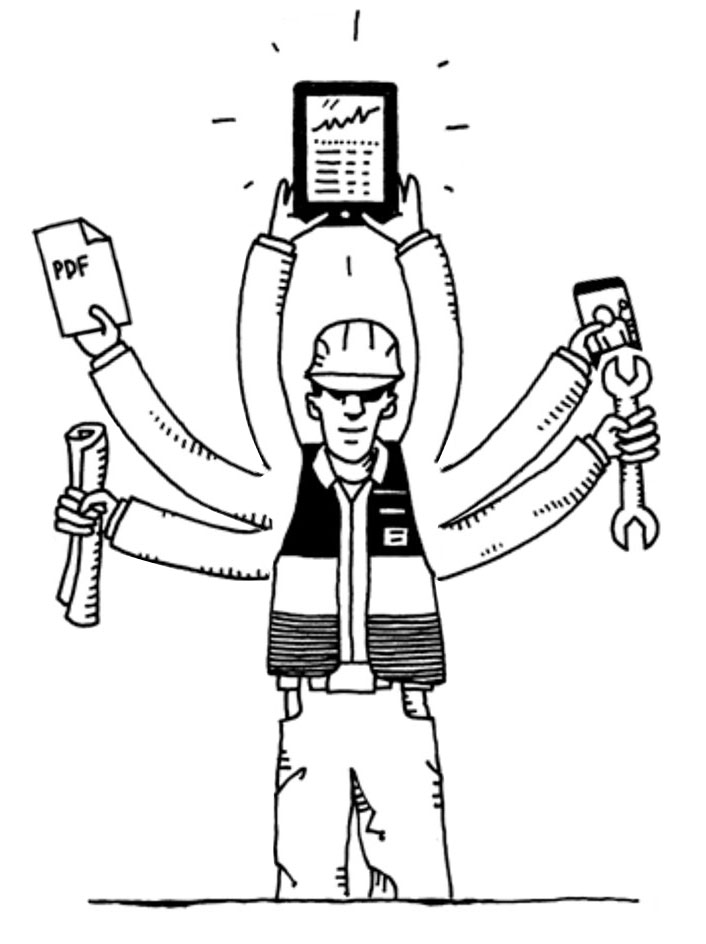
Eighty-four percent of high school students want to go to college.6 But fewer than half of them graduate fully prepared for college coursework.7 As a result, students and their families spend more than $1 billion every year on remedial courses in college.8
Instead of being challenged to develop their minds, most high school students say they are bored, unchallenged, and uninspired.9 Only half of high school students believe their school has helped them develop the skills and knowledge they will need in college-level classes.10 And less than half of our high school students say their school has helped them figure out which careers match their skills and interests.11
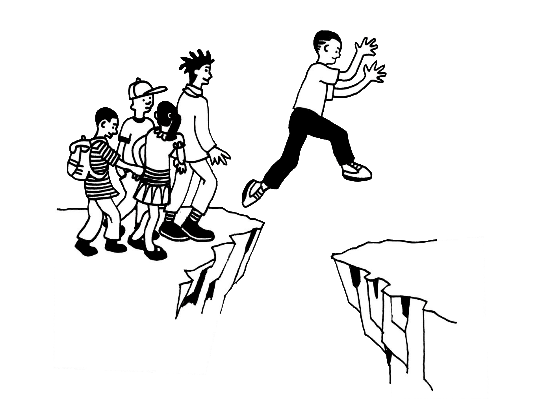
Their dropout rates are higher, and their college readiness is lower. Economists estimate that this waste of talent and human potential imposes the equivalent of a permanent recession on the American economy. Closing the racial achievement gap would boost our GDP by half a trillion dollars per year.12
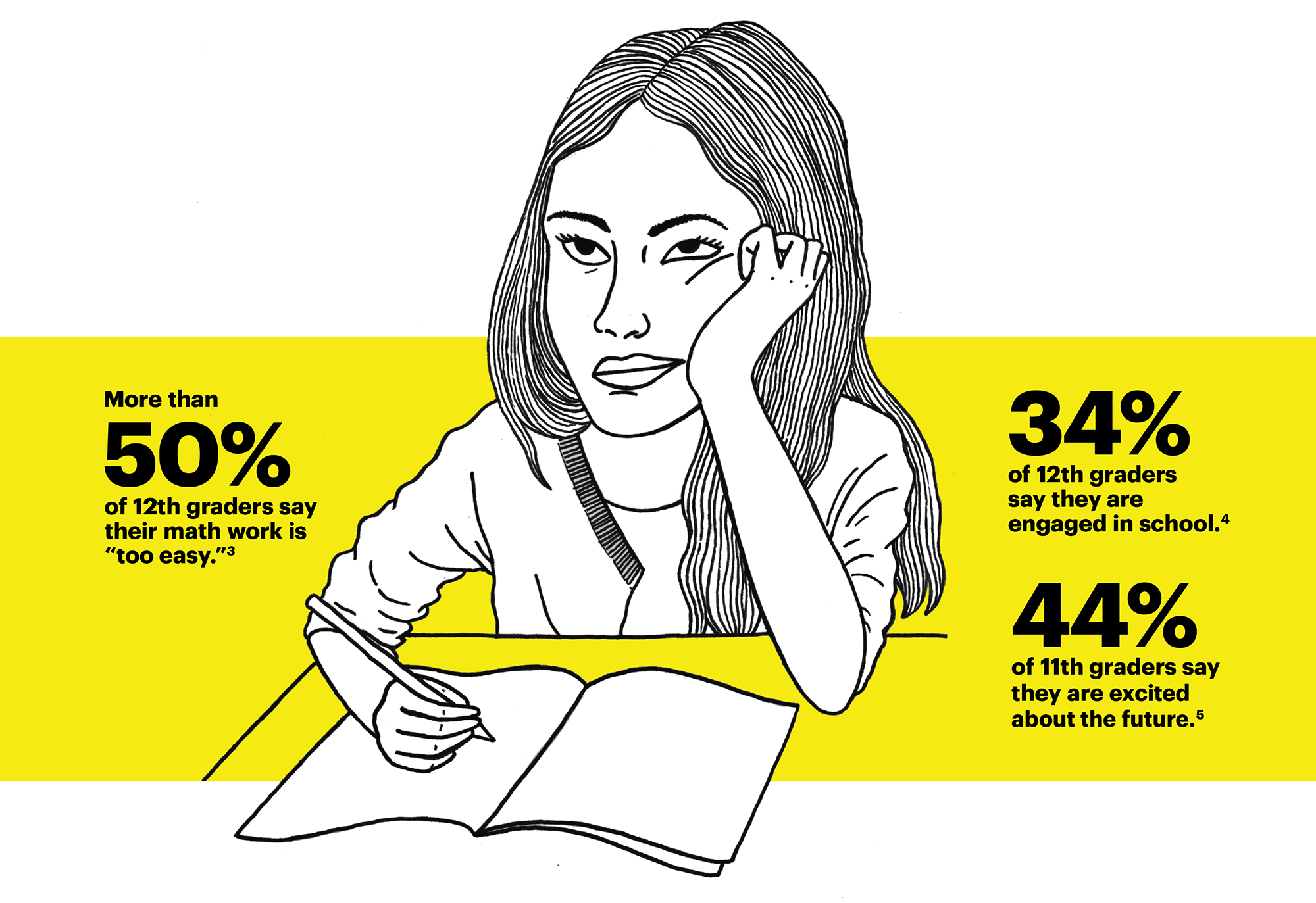
Many educators see the problems, but every time they try a different approach, they run into at least one rule that stops them. In particular, rigid requirements around “seat time” stop in their tracks many of the most creative efforts to get students outside their classrooms into workplaces and other venues where they can learn by tackling real-world problems.
High schools are the one part of our educational system that hasn’t gotten much attention in recent years. And that’s a waste because high schools can be the fulcrum for securing faster improvements in our elementary and middle schools and successful transitions to postsecondary education and work. Transformed high schools drive improvement in the elementary and middle grades by setting high expectations for learning and modeling the kind of real-world, engaging learning that students and families value. Transformed high schools do a better job of preparing students for adult life and equipping students to succeed in colleges, career and technical training programs, and the military. High school transformation will have major payoffs—for students, for families, and for the whole state.


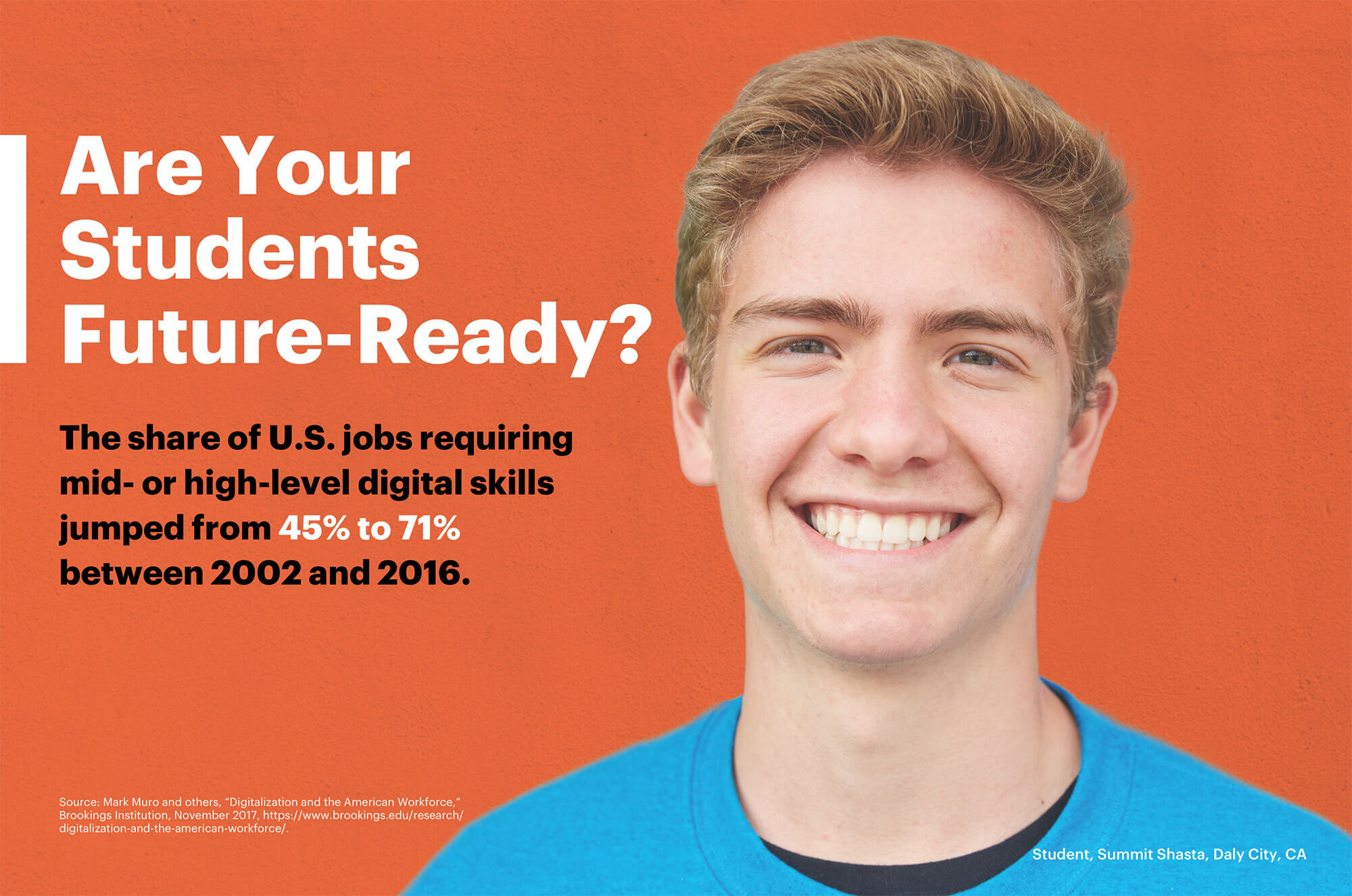
- Inspire with Powerful Examples

Most people have a hard time imagining what a transformed high school would actually look like. That’s hardly surprising. After all, most of us attended traditional high schools. So, in order to get people in your state to walk this journey with you, you’ll need to stimulate their thinking with a few good ideas and a few potent examples.
We at XQ often start by asking audiences simply to imagine schools that truly prepare all young people for the future. Then we inspire them with examples of innovative high schools like the ones we profile below. (We profile several others throughout the rest of this guide.) By describing a few of these schools and what makes them dynamic and different—a partnership with a university or museum, a commitment to real-world learning, or computer science for all—you can give listeners not just a sense of the problem but also some exciting images of what the solutions can look like. There are probably innovative schools in your state that you can talk about, too.
The point is, “innovative” high schools don’t all look exactly the same. What matters is that they serve the needs of their students and are right for their communities. And they do that by embodying some core design principles that ensure all students succeed and graduate from high school prepared to thrive in the jobs of the future.
Find more examples of XQ Schools at:
https://xqsuperschool.org / schools /
For a look at the XQ Design Principles, visit:
XQ Design Principles
Where the community is the classroom.
Where students master academic knowledge and skills by diving into challenging projects in partnership with local businesses, tech institutions, civic organizations, and nonprofits.
With a clear focus on students.
Where students have ownership in—and responsibility for—how they learn. Where learning is based on each student’s needs.
Where all students are prepared for college and careers.
Where students actively explore their personal and career interests early on and participate in high-quality, real-world internships and apprenticeships.
Where the school is at the center of efforts to rejuvenate its city and community.

Transform High School
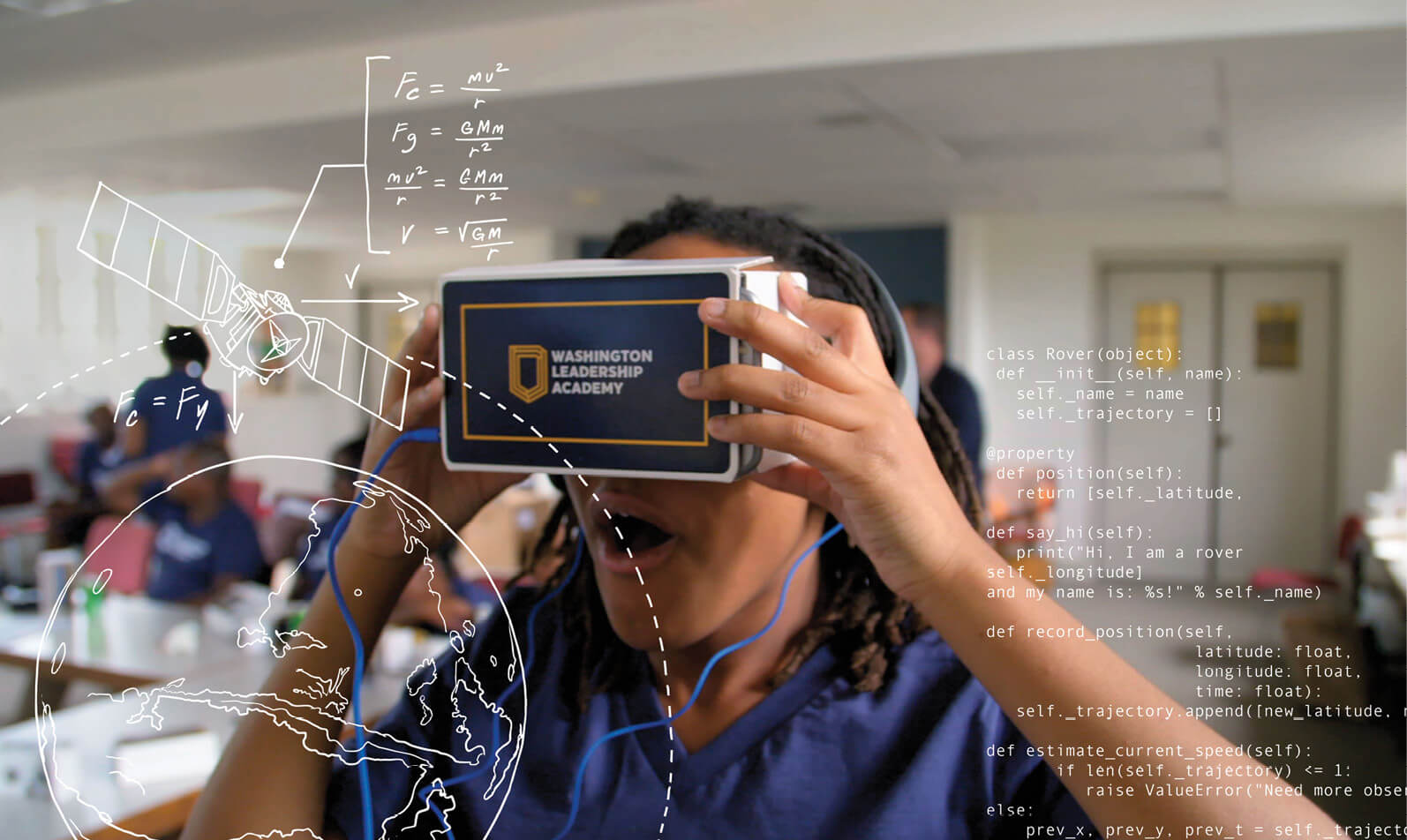
- SEEING IS BELIEVING
Certainly, you don’t need to use all of these examples. But by picking one or two from this group of schools, or from others described later in this guide, or by describing an innovative school in your state, you can help to give listeners not just a sense of the problem but also some exciting images of what the solutions can look like.
In Washington, D.C., just 30 African American students took AP Computer Science during the 2015-16 academic year. In 2016-17, one school, the Washington Leadership Academy, more than tripled that number. Washington Leadership Academy offers four years of computer science along with opportunities to learn through virtual reality. And it places a strong emphasis on leadership to prepare graduates to take an influential role in digital-age civic life. Students have the opportunity to take electives from part-time instructors with specific, hard-to-find skills in fields such as programming and robotics. And teachers leverage digital tools to personalize learning, tailoring instruction to each student’s interests and needs while tracking each student’s mastery of rigorous standards.
In Indianapolis, students enroll at Purdue Polytechnic High School (PPHS)—one of the city’s Innovation Network Schools—to prepare for the high-skill, high-wage STEM jobs of the future. At PPHS, students learn by doing, including through industry-focused projects and design challenges that combine rigorous academics and applied skills in real-world settings. Personal learning coaches help students create a customized daily schedule designed to advance each student’s own goals and meet unique educational needs. Eleventh graders choose a career pathway in a growing field such as advanced manufacturing or supply chains and logistics. And every graduate has a pathway to postsecondary education and training, including an option for direct admission to Purdue Polytechnic Institute.
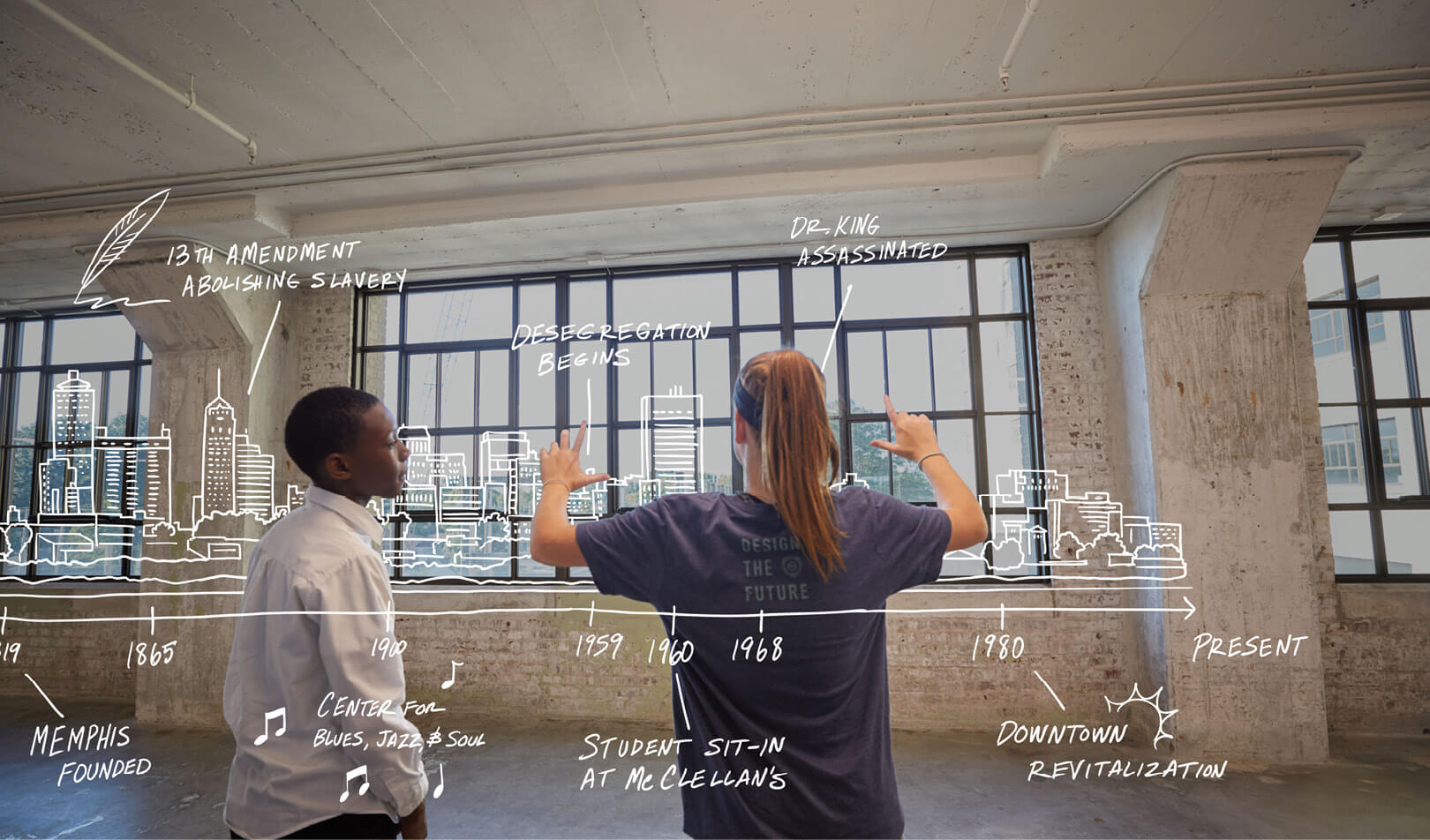
In Memphis, Tennessee, Crosstown High (opening August 2018) is giving new meaning to the term “community engagement.” The high school is located in Crosstown Concourse, a 1.1 million square foot redevelopment project that houses businesses, nonprofits, and civic organizations in a mixed-use vertical urban village—enabling students to learn from the community, with the community, and in ways that benefit the community. Students will work alongside Crosstown Concourse partners to plant and maintain a community garden, thereby learning horticulture, nutrition, and math. Through a partnership with a medical clinic, students will research and design programs to meet the health needs of the greater Memphis community. And Crosstown High’s intentional approach to recruiting students from a cross-section of the city will ensure that its enrollment is the most diverse of any charter school in Memphis—a powerful goal in a community striving to overcome a history of segregation.
In Cleveland, a group of innovators from education, local industry, museums, and higher education came together to design a STEM-focused school in the heart of a community that was losing its population and had one of the highest dropout rates in the country. Ten years later, MC2 STEM High School and its two primary partners, Cleveland State University and General Electric are using the city as the campus with a curriculum comprised entirely of project-based learning. The school pulls in experts, internships, and resources from more than 85 local industry and advocacy groups to help prepare students to work in and for the community. Students pursue semester-long, interdisciplinary, theme-based projects that integrate Ohio’s state standards and reflect current industry needs. The atmosphere of innovation empowers students to direct their own learning.
In Grand Rapids, Michigan, high school students at the new Grand Rapids Public Museum School (opening August 2018) will treat the entire community as their classroom, with the museum and city archive as a home base. Building on the example of a successful, existing middle school, the philosophy of this new high school stems from a simple idea: immersing students in learning experiences that are deeply rooted in their own hometown will produce engaged and capable citizens. The curriculum will focus on big issues related to sustainability, technology, and design explored through a local lens—the history, culture, economy, and ecology of the Grand Rapids region itself. Students will take on projects that contribute to the community in tangible and positive ways. One project is designed to become the largest river restoration initiative in the United States.
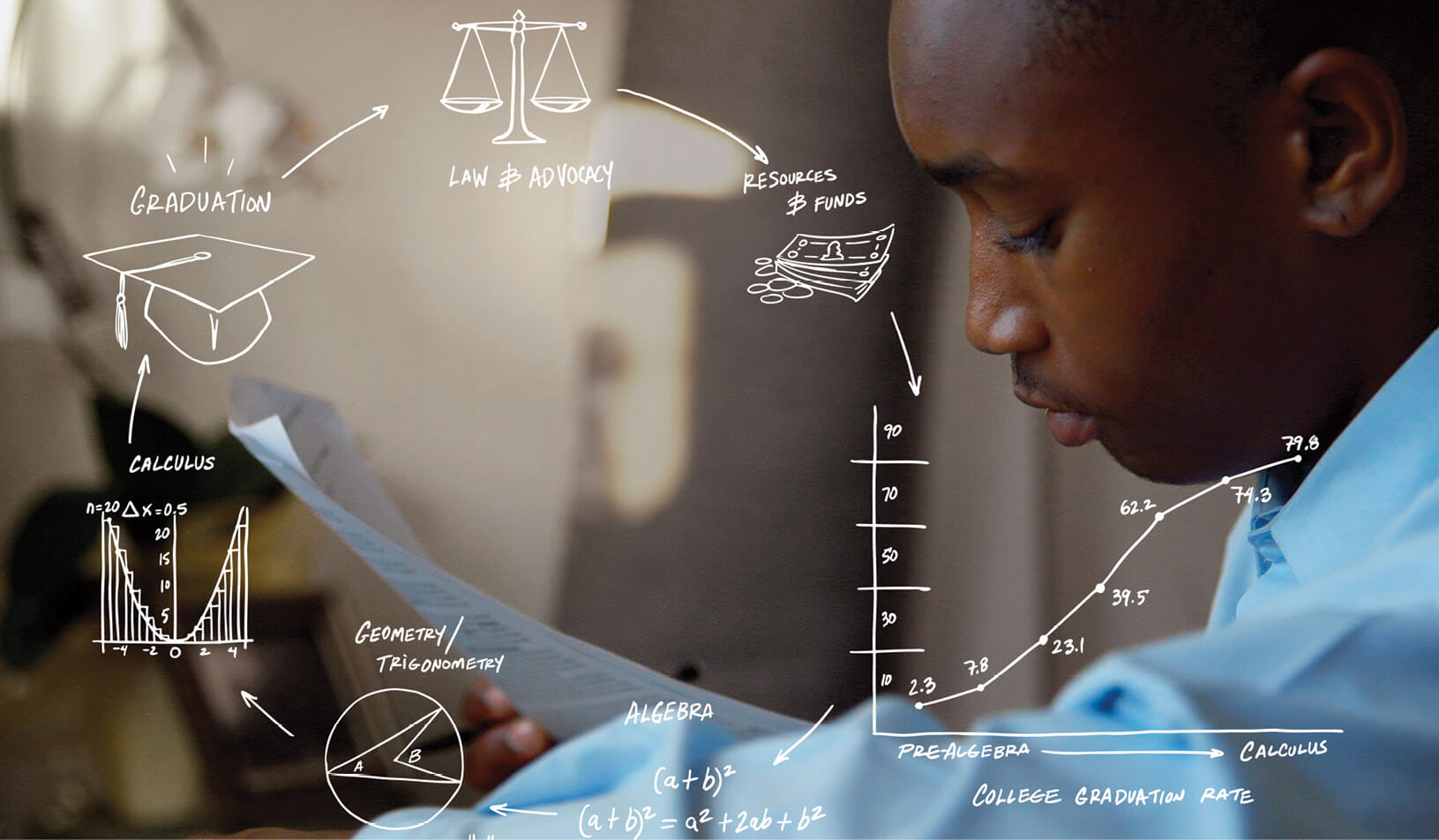
At Casco Bay High School (CBHS) in Portland, Maine, 400 students, representing more than a dozen countries, reflect the city’s growing diversity as a refugee resettlement city. Students’ academic journeys are organized around “learning expeditions”—interdisciplinary explorations of real-world issues in which students work directly with community experts, often travel to other cities and present their learning to authentic audiences. CBHS joins academic knowledge with a strong focus on habits of work to help students build the confidence and work ethic to be independent learners. “Crew,” a group of students who stay together throughout their school careers, is a key structure for growth and support, providing students with a school family whose members are dedicated to each other’s success. At CBHS, 100 percent college acceptance is the norm.
In Los Angeles, educators are partnering with community-based youth agencies and service centers to provide disconnected youth—including teenagers who are homeless or in foster care—with an education designed to meet their needs and prepare them for success in college and careers. Da Vinci RISE High accepts students all year round and goes to where the students are. RISE replaces the rigid structures of traditional high schools with a project-based curriculum that allows students to learn in ways and places that work best for them. Students create their own learning pathways and progress at a flexible pace by demonstrating mastery at every step. The school’s co-location with youth and social services means students can get help, such as legal assistance or medical and mental health care, without missing school.
TALK THE TALK WITH SOME USEFUL TERMS
MODEL SCHOOLS & NETWORKS:
Competency-based education:
Students progress by demonstrating that they have mastered specific, clearly defined learning goals. Students receive extra time and support whenever they need it, and they can progress at different paces according to their own learning needs and ambitions rather than spending a set amount of “seat time” in each course.
Personalized learning:
Teachers customize each student’s learning experience according to the student’s unique interests, needs, and postsecondary aspirations.
In practice, personalized learning is often an important aspect of competency-based education, but personalization can be an important feature of any high school.
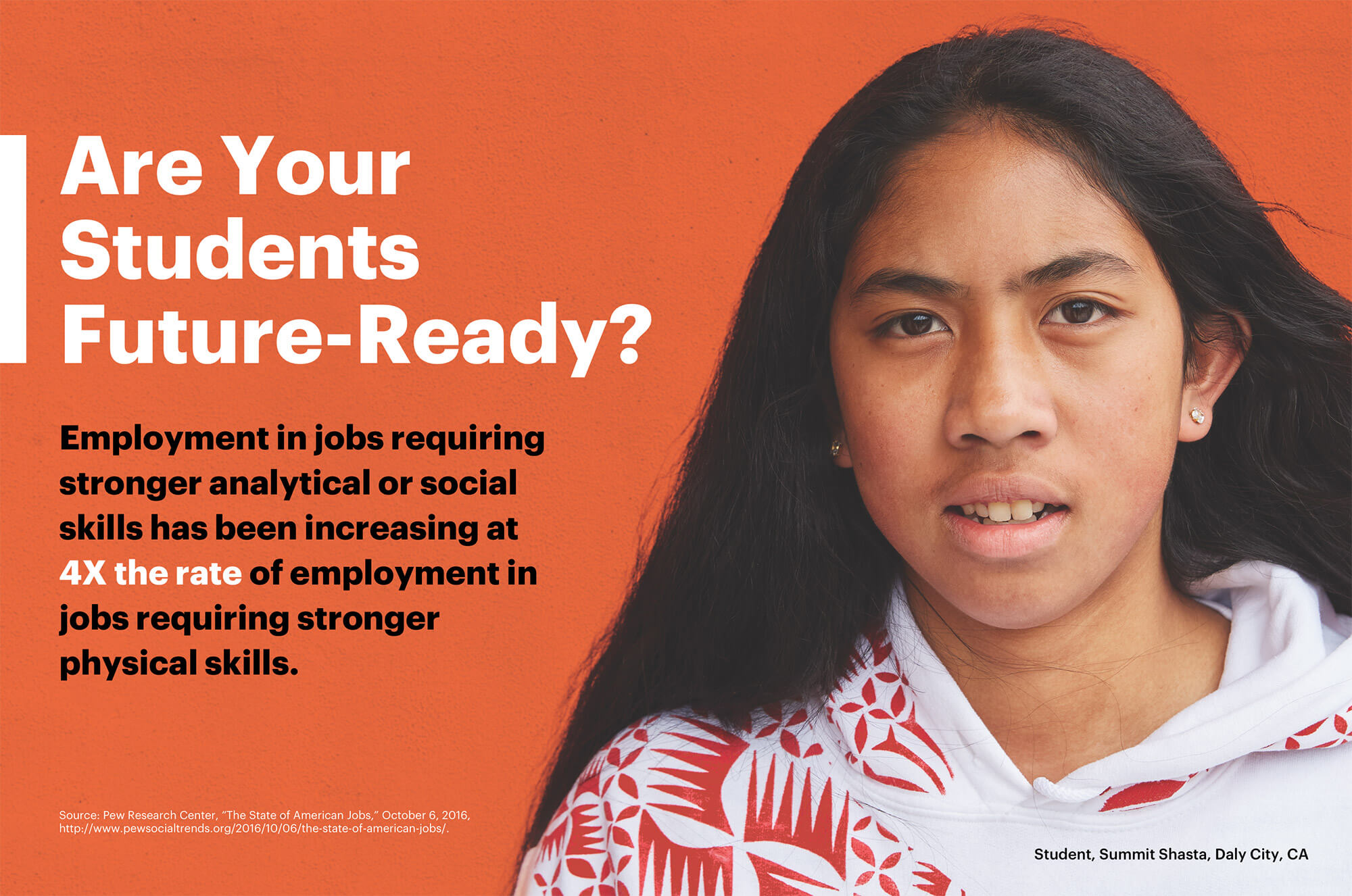
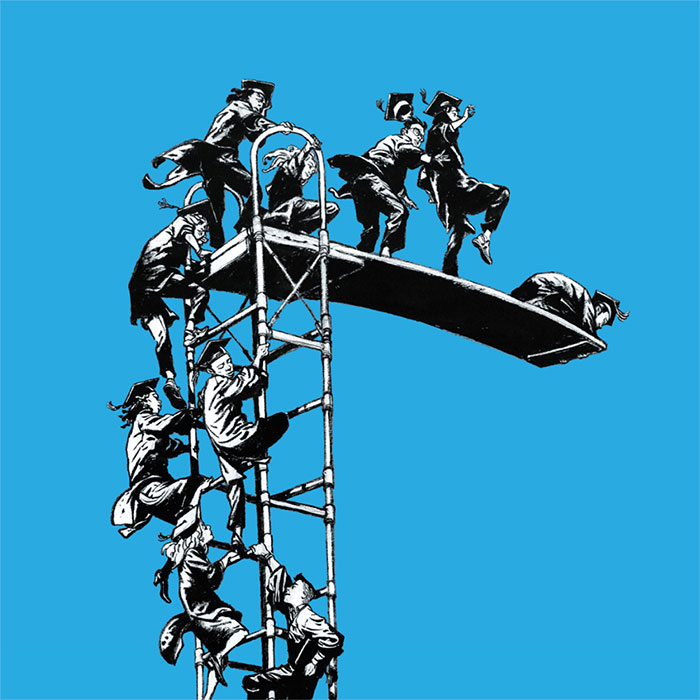
High School and the Future of Work
Sign up for our newsletter
Get the latest educator insights and practical classroom tips every other week, direct from the XQ community
Follow us to #RethinkHighSchool
